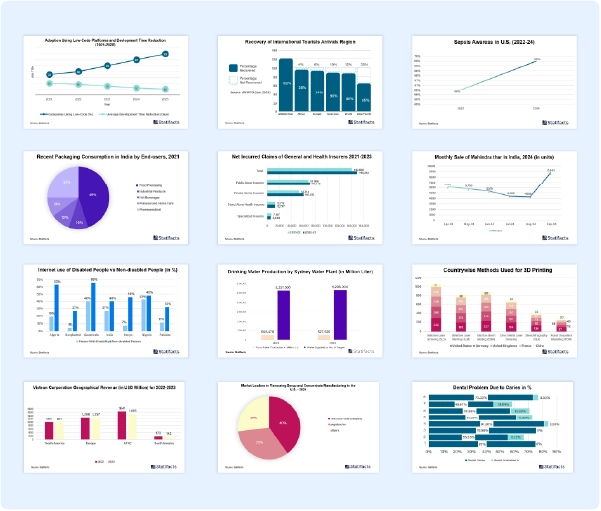The U.S. antibody drug conjugates market size was estimated at USD 4,020 million in 2024 and is projected to be worth around USD 12,050 million by 2034, growing at a CAGR of 11.6% from 2024 to 2034.
U.S. Antibody Drug Conjugates Market Report Highlights
- By application, the breast cancer segment dominated the market with the largest share in 2024.
- By application, the blood cancer segment is anticipated to grow during the forecast period.
- By technology the cleavable segment held the largest market share in 2024.
- By technology the non-cleavable segment is expected to grow rapidly during the forecast period.
The U.S. antibody drug conjugates market (ADC) is an industry that focuses on developing and commercializing ADCs, a class of targeted cancer therapies. ADCs precisely perform chemotherapy on cancer cells while avoiding damage to healthy tissues by integrating cytotoxic medications with monoclonal antibodies. In contrast to standard chemotherapy, these treatments have fewer side effects and provide a viable method of treating a variety of cancers. New ADC treatments are developed due to ongoing research and regulatory approvals that stimulate innovations in this sector. Because of this, ADCs are increasingly playing a crucial role in contemporary oncology by providing patients access to more personalized and efficient therapy alternatives.
The growing demand for adapted cancer treatment is one of the major factors propelling the U.S. antibody drug conjugates Market's expansion. Traditional chemotherapy frequently causes significant adverse effects and damages healthy cells. ADCs, on the other hand, provide an improved approach by delivering cytotoxic medications straight to cancer cells via monoclonal antibodies, reducing unintended harm. ADCs are a desirable alternative for healthcare professionals as well as patients due to their tailored mechanism, which enhances therapy efficacy while reducing side effects. Furthermore, the demand for advanced treatments has increased due to the rising incidence of cancer in the United States. Experts are creating next-generation ADCs with enhanced potency, stability, and safety profiles due to continuous development in biotechnology. The FDA and other regulatory bodies are speeding up the approval for novel ADC treatments, which is driving the market's expansion. ADCs have grown into a vital component of modern oncology as knowledge and usage of them grow, propelling the market's significant growth.
Similarly, the growing investment in research and development (R&D) by pharmaceutical firms and biotechnology is another significant factor fueling the expansion of the market. Industries are investing an enormous amount in creating next-generation ADCs with improved efficacy, lower toxicity, and wider uses across a range of cancer types as ADC technology continues to advance. Recent developments in antibody engineering, linker technology, and payload selection are expanding the stability and accuracy of ACDs, increasing their capacity to target cancer cells with the least amount of damage to healthy tissues.
Moreover, the development and clinical testing of innovative ADC treatments is being accelerated by partnerships among biotech companies, academic institutions, and contract research organizations (CROs). The government's funding and support of cancer research additionally helps the industry grow. The ongoing quest for innovation is anticipated to accelerate the approval and commercialization of new medicines, enhancing the market's growth trend in the upcoming years, particularly due to the extensive pipeline of ADC candidates in clinical studies.
Expanded healthcare funding, government initiatives, and private insurance are making expensive treatments like ADCs more affordable for patients. ACDs' market penetration will increase as more patients may make use of them as reimbursement regulations change to accommodate the latest therapies. Additionally, greater awareness about ADCs among medical professionals and patients is contributing to higher adoption rates. Oncologists are more likely to recommend ACDs as they become aware of their benefits over standard chemotherapy. Informed patients are pushing for more sophisticated treatments, which is driving up demand. As the population of elderly individuals increases, so does the probability of cancer. The need for innovative treatments like ADCs, which provide targeted and effective cancer therapy with fewer adverse reactions, continues to grow as the chance of getting cancer rises with age, which is boosting the growth of the market.
Artificial intelligence is significantly contributing to the growth of the market by speeding up drug research, simplifying clinical trials, and improving manufacturing procedures. Massive datasets can be analyzed with the help of AI-powered algorithms to find possible ADC targets, forecast medication efficacy, and quicken the creation of more reliable and efficient ADCs. Due to this, medication development takes less time and costs less, enabling pharmaceutical companies to launch innovative treatments promptly.
AI aids in clinical trials by forecasting treatment outcomes, identifying appropriate patient demographics, and refining trial designs, all of which increase success rates and expedite regulatory clearance. AI-driven automation in ADC manufacturing further improves scalability, lowers production mistakes, and strengthens quality control. More personalized ADC treatments are now possible due to AI's assistance in biomarker detection.
Conventional ADC production can be costly and intricate. However, the process is becoming more efficient due to new biopharmaceutical production techniques, including enhanced conjugation techniques, automation, and continuous production. These developments guarantee a steady supply of drugs, enhancing batch uniformity and lowering production costs. These medicines will become more affordable as ADC production improves, thus boosting the growth of the market. Furthermore, ADCs are becoming a more appealing option to standard chemotherapy, which often requires extended hospital stays, as outpatient cancer treatment becomes more important. This trend will facilitate the increasing need for ADC-based treatments. Research organizations and government bodies are providing substantial funding for ADC development and research. Innovative ADCs are being developed quickly due to public-private cooperation between research institutions and biotech industries.

